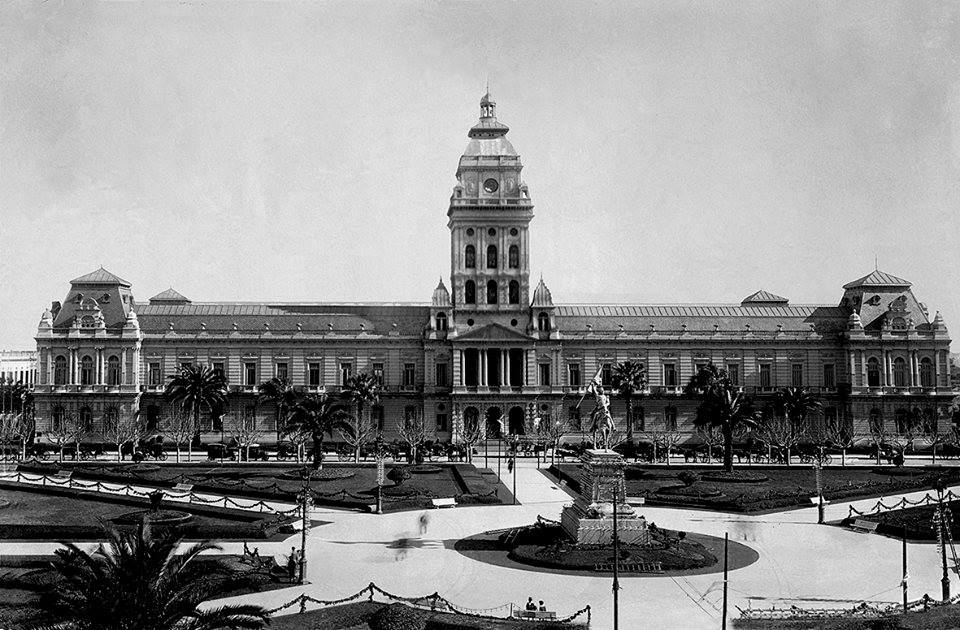Palace of Justice (Rosario) on:
[Wikipedia]
[Google]
[Amazon]
 The Palace of Justice (''Palacio de Justicia'') is a former
The Palace of Justice (''Palacio de Justicia'') is a former Universia: Culmina la reconstrucción de Derecho en la UNR
/ref>
UNR's Law school web site
UNR's web site
{{coord, 32, 56, 38, S, 60, 39, 04, W, source:eswiki_region:AR, display=title Government buildings completed in 1892 Buildings and structures in Rosario, Santa Fe National Historic Monuments of Argentina
 The Palace of Justice (''Palacio de Justicia'') is a former
The Palace of Justice (''Palacio de Justicia'') is a former courthouse
A courthouse or court house is a building that is home to a local court of law and often the regional county government as well, although this is not the case in some larger cities. The term is common in North America. In most other English-spe ...
in Rosario, Santa Fe
Rosario () is the largest city in the central Argentine province of Santa Fe. The city is located northwest of Buenos Aires, on the west bank of the Paraná River. Rosario is the third-most populous city in the country, and is also the most p ...
, Argentina
Argentina (), officially the Argentine Republic ( es, link=no, República Argentina), is a country in the southern half of South America. Argentina covers an area of , making it the second-largest country in South America after Brazil, th ...
.
Juan Canals, an entrepreneur, commissioned the British architect Herbert Boyd Walker, who conceived and built the Palace of Justice in 1892. The building constitutes a singular example of the eclectic style common at the end of the century. It has a strong French
French (french: français(e), link=no) may refer to:
* Something of, from, or related to France
** French language, which originated in France, and its various dialects and accents
** French people, a nation and ethnic group identified with Franc ...
and Italian influence, which can be seen in its two internal galleries and patios, or in its many justice-related sculptures. Perhaps the most notable reference of the building is the tower, which has a bell and a giant clock
A clock or a timepiece is a device used to measure and indicate time. The clock is one of the oldest human inventions, meeting the need to measure intervals of time shorter than the natural units such as the day, the lunar month and the ...
on its top.
It was built on a plot donated partly by the Rosario City Hall and partly by Canals, who was looking forward to recovering his initial investment after 30 years of collecting rent. Before the construction, the place was occupied by the " Las Carretas" square. The project also included two more buildings: one of them is today an elementary school
A primary school (in Ireland, the United Kingdom, Australia, Trinidad and Tobago, Jamaica, and South Africa), junior school (in Australia), elementary school or grade school (in North America and the Philippines) is a school for primary ed ...
, while the other one is a detachment of the provincial government.
In 1912, following Canals' bankruptcy
Bankruptcy is a legal process through which people or other entities who cannot repay debts to creditors may seek relief from some or all of their debts. In most jurisdictions, bankruptcy is imposed by a court order, often initiated by the debtor ...
, the property of the buildings was transferred to the provincial government.
Since its creation and until 1960, the edifice was used by the city courts of law. It was known as the "Palacio de Justicia". On 1960 the city courts of law had to move due to the needs of Rosario's growing population. Almost 50 years have passed since then; however, people still refer to the building as the "Ex-Palacio de Justicia".
Shortly after the Courts of Law had moved, the building was used to house a new institution dedicated to the teaching of law and political sciences, as well as the "Gallardo" Natural History Museum on the upper floor. The institution later became the Law and Political Sciences school.
In 1974, the Political Sciences school was given its own building, so all that remained was the Law School and the Natural History Museum.
In 1997, by decree N° 262/97, the building was declared a National Historic Monument.
In 2003, the building caught fire and its eastern wing was severely damaged. As a result, the Dr. Ángel Gallardo Provincial Natural Sciences Museum The Dr. Ángel Gallardo Provincial Natural Sciences Museum (in Spanish, ''Museo Provincial de Ciencias Naturales Dr. Ángel Gallardo'') is a public museum in Rosario, Argentina, specialized in biology. It was founded by Professor Pascual Maciá (a p ...
lost many of its collections, and had to move. Full restoration works began immediately after the fire and continue today. The building is expected to be fully restored and as of 2007, refurbishment works were 90% complete (including a substantial modernization of the facilities)./ref>
References
External links
UNR's Law school web site
UNR's web site
{{coord, 32, 56, 38, S, 60, 39, 04, W, source:eswiki_region:AR, display=title Government buildings completed in 1892 Buildings and structures in Rosario, Santa Fe National Historic Monuments of Argentina